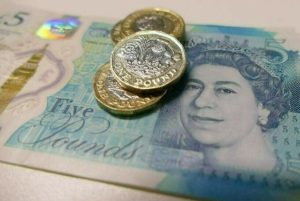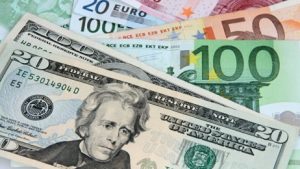UK BORROWING COSTS HIT HIGHEST SINCE 1998, POUND SLIDES ON FISCAL WORRIES
Britain’s 30-year borrowing costs rose to their highest levels since 1998 and sterling slid over 1.5% on Tuesday, highlighting growing investor anxiety about the UK’s ability to keep its finances under control. The selloff in British bonds, known as gilts, coincided with selling across other major bond markets, where the focus is firmly on rising debt levels. But weakness in sterling pointed to vulnerability in UK markets at a time of increasing concern about the Labour government’s ability to exercise fiscal constraint. “The UK has had a perilous (fiscal) backdrop and that’s going to continue,” said Lloyds FX strategist Nick Kennedy. “Over the summer, there has been a bit of a risk premium built into the rates market. Investors are now wanting more of a risk premium for sterling as well.” Thirty-year gilt yields rose to 5.723%, their highest since May 1998, and sterling was by far the day’s weakest performing G10 currency against the dollar, down over 1.5% at one point. It was last off 1.0% at $1.34, its biggest daily fall since June, and at 86.98 pence per euro, 0.6% softer. Analysts said the changes on the first day of parliament after the summer recess renewed focus on the economic challenges given heavy levels of borrowing, slow economic growth and the highest inflation rate among the G7 major Western economies. Santander said it now expects the Bank of England to hold rates at 4% until the end of 2026, having previously expected two cuts next year. With the budget unlikely to come before November, Britain faces weeks of speculation about tax rises, potentially dampening investment and consumer confidence. And higher borrowing costs are making the government’s task harder. “Everyone wants to feel assured that the government finances are in a sound position but as yields go up … the fiscal black hole has grown and grown and grown,” said Mark Dowding, fixed income CIO at RBC BlueBay Asset Management. Britain is not the only country suffering fiscal worries. France’s 30-year government bond yields surged to their highest levels in over 16 years on Tuesday, driven by fiscal concerns and political instability. Japan’s bonds have sold off heavily this year on concern about rising debt. In one reassuring sign, Britain sold a record 14 billion pounds ($19 billion) of new 10-year bonds on Tuesday, after attracting 141.2 billion pounds in orders from investors. The Bank of England is also expected soon to slow the pace at which it shrinks its 558 billion-pound ($754 billion) holdings of government bonds, a process called quantitative tightening. Dowding at BlueBay wanted them to go further. “The Bank of England has got to stop QT right now,” he said. “Many investors including ourselves have been saying to the Bank of England they are making life worse, not better. Stop doing this.

DOLLAR EDGES HIGHER WITH INVESTORS FOCUSED ON LABOR MARKET DATA
The U.S. dollar edged higher on Thursday in a volatile week with markets eyeing a crucial jobs report, after data indicating labor market weakness reinforced expectations the Federal Reserve will cut rates this month. Data showed on Thursday that the number of Americans filing new applications for jobless benefits increased more than expected last week, consistent with softening labor market conditions. Furthermore, the ADP National Employment Report showed U.S. private payrolls increased less than expected in August. The dollar edged higher in relatively steady trade, reflecting investor wariness of making any big moves ahead of Friday’s more comprehensive non-farm payrolls report. The dollar strengthened 0.33% to 148.585 against the Japanese yen. It was up 0.22% to 0.80615 against the Swiss franc. The greenback lost ground against both safe-haven currencies on Wednesday. The euro fell 0.13% to $1.16455. “It’s been choppy … with enough questions around where the economy is at that people are just likely trying to square up before Friday’s number and not taking any outward bets one way or the other,” said Marvin Loh, senior global market strategist at State Street in Boston. The dollar index rose 0.20% to 98.334 after dropping in the previous session. The U.S. dollar tends to strengthen across the board against peers if the monthly payrolls report beats market expectations, but it weakens if the data falls short of estimates, according to Goldman Sachs analysts led by Karen Fishman. “With risks to the labor market skewed to the downside and our more dovish view on the Fed, we have been recommending being short USD/JPY with a target of 142,” the analysts wrote. Several Federal Reserve officials said labour market worries continue to underpin their view that rate cuts still lie ahead for the central bank, boosting expectations of an imminent rate cut. The Fed is due to meet on September 16 and 17. Traders are pricing in a near-100% chance of the Fed cutting interest rates later this month, up from 87% a week ago, CME FedWatch showed. In the bond market, yields on long-end notes across the globe have risen as investors become increasingly anxious about the fiscal health of major economies from Japan to Britain and the United States. U.S. Treasury yields slipped. The 2-year note yield fell 1.8 basis points to 3.594%. The yield on benchmark U.S. 10-year notes fell 3.1 basis points to 4.18%. A closely watched auction of 30-year Japanese government bonds passed smoothly on Thursday. In other currencies, the pound sterling weakened 0.12% to $1.34310 after gaining in the last session. The Canadian dollar weakened 0.25% versus the greenback to C$1.3827 per dollar. The Australian dollar weakened 0.44% versus the greenback to $0.6514. Spot gold fell 0.35% to $3,546.28 an ounce, easing from a record high reached on Wednesday.

STERLING STEADIES AS UK BOND MARKET FRENZY EBBS
The pound drifted on Thursday, in what has been its most volatile week in months, as investors grow increasingly nervous about Britain’s finances and the government’s ability to keep them under control, which has rattled the bond market too. Sterling traded a shade higher at $1.3455, heading for a third weekly decline. The pound was also steady against the euro, which held at 86.67 pence. Yields on 30-year British government bonds, or gilts, briefly shot up this week to their highest since 1998, swept along in a rout that has punished the long-dated debt of most major economies. Typically, higher yields would support the pound. But when that increase in borrowing costs is the product of concern about the outlook for inflation, rather than that of optimism that longer-term growth looks robust, the currency suffers. Bank of England Governor Andrew Bailey on Wednesday suggested that British interest rates would continue to fall, but there was far less certainty about the pace of cuts. “There is now considerably more doubt about exactly when and how quickly we can make those further steps,” Bailey told a hearing of the House of Commons’ Treasury Committee, reiterating his comments after August’s rate cut. The derivatives market shows traders are assuming the BoE will almost certainly cut rates at its meeting on September 18, but the picture beyond that is fuzzier. “There is just an 18% chance of a cut in November, a month ago there was a 67% chance of a cut. Thus, UK yields may be able to reverse recent gains, but we still expect UK yields to remain higher than our peers’ yields for some time,” Kathleen Brooks, research director at XTB, said. “With uncertainty likely as we lead up to the budget in November, we believe that sterling peaked in July at $1.38, and may trade sideways below $1.35 in the short term.” Finance minister Rachel Reeves presents her autumn budget on November 26. Reeves is under pressure to keep the government’s finances on track and has vowed to keep a grip on spending to help bring down inflation and borrowing costs. Bond investors are concerned. Britain has the highest borrowing costs among the Group of Seven advanced economies. A 10-year gilt yields 4.74%, compared with 4.2% for an equivalent U.S. Treasury and 1.6% for low-yielder Japan.
DOLLAR DROPS AGAINST PEERS AFTER WEAKER-THAN-EXPECTED JOBS REPORT
The U.S. dollar fell sharply against major peers on Friday after crucial monthly jobs data showed that American employers hired fewer workers than expected, which affirms weakening labor market conditions and likely guarantees a Federal Reserve interest rate cut. Labor Department data showed that nonfarm payrolls increased by only 22,000 jobs last month, far short of the 75,000 positions estimated by economists polled by Reuters. The dollar fell across the board following the report. It weakened 0.70% to 147.44 against the Japanese yen but was still on track for the second straight week of gains. The greenback dropped 0.91% to 0.79830 against the Swiss franc and was poised for the fourth consecutive week of losses against the currency. “The data is giving evidence of what was feared, which is that what companies have experienced throughout the year because of changes in trading policy has added costs when it comes to tariffs,” said Juan Perez, director of trading at Monex USA in Washington. “These costs can only be absorbed for so long and what is being manifested is that companies are struggling with hiring.” The euro was up 0.55% at $1.171675 and was set to notch a weekly gain against the dollar. The dollar index fell 0.48% to 97.767 and was set to shed 0.23% this week. “It’s definitely not a good story for the U.S. dollar and it’s not a good story for the United States because what today truly establishes is that we are experiencing very serious stagflation,” Perez added. U.S. Treasury yields fell. The rate-sensitive 2-year note yield fell 8.1 basis points to 3.511%. The yield on benchmark U.S. 10-year notes fell 8.8 basis points to 4.088%. Wall Street’s main indexes, including the S&P 500 (.SPX), , Nasdaq (.IXIC), and the Dow (.DJI), reversed gains in early trade and were all trading down. Traders are now pricing a 10% chance of a 50-basis point cut at the Fed’s next meeting later this month, while the probability of a 25-basis point cut is at nearly 90%, according to the CME’s FedWatch tool. “The pendulum has swung very far in favor of a Fed rate cut that even the market is pricing in a 10% chance of a 50 basis-point cut,” said Marc Chandler, chief market strategist at Bannockburn Global Forex. “But a 50 basis-point cut would make it seem like they made a mistake by not cutting previously and I don’t think they want to admit to that . . . The prudent thing to do, and I think the Fed is prudent, is a 25-basis-point cut.” The pound rose versus a weaker dollar after Friday’s news that British Deputy Prime Minister Angela Rayner resigned, after admitting to underpaying property tax on a new home, in a fresh blow for her boss, Prime Minister Keir Starmer. It strengthened 0.51% to $1.35055 and was on track to gain 0.02% for the week. Gold hit a fresh record high of $3,599.89 as the dollar weakened. Spot gold rose 1.35% to $3,593.04 an ounce.

STERLING TICKS HIGHER BUT HEADS FOR WEEKLY LOSS AFTER GILT TURBULENCE
The pound rose versus a broadly weaker dollar on Friday but headed for its third weekly decline in a row after a week marked by gilt market turbulence amid growing investor jitters over Britain’s finances. At 1040 GMT on Friday, sterling was 0.3% higher at $1.3481, but on track for a weekly decline of 0.2%. The pound was flat against the euro, which held at 86.73 pence. The dollar was weaker across the board as traders await key U.S. payrolls data due later which are expected to firm up the case for an interest rate cut by the Federal Reserve. Sterling has been in focus this week, after British government bonds, known as gilts, sunk amid a broader bond market sell-off as focus shifted to rising debt levels in major economies. Yields on 30-year British government bonds, or gilts, briefly shot up this week to their highest since 1998. This week the date for the next UK budget was set for November 26, with finance minister Rachel Reeves under pressure to keep the government’s finances on track. In a note, Ruth Gregory, deputy chief UK economist at Capital Economics said many of the conditions which have led to fiscal crises in the past are now in place in the UK, but that this does not mean a fiscal crisis in the UK is imminent or inevitable. “The missing ingredient is a trigger. If a UK fiscal crisis does erupt, it’s as likely to come from a change in perceptions or personnel as economic data or policy,” she wrote. “This underlines the need for the government to continue to commit to fiscal discipline to keep the bond market onside.” Official figures on Friday showed British retail sales volumes rose by a higher-than-expected 0.6% in July, leaving them up 1.1% on the year. Economists polled by Reuters had forecast a 0.2% monthly rise in sales volumes and a 1.3% increase compared with a year earlier. Francesco Pesole said while the figure was higher than expected, the previous month was also revised down, limiting any market impact, and it is also not what the market is focused on. “It’s very focused on inflation to gauge whether the Bank of England (BoE) views that inflation is actually a bit hot to keep cutting rates at the same pace,” said Pesole. Money markets are placing a 98% chance of a 25-basis point cut at the BoE’s next meeting in September.
- CAPITALDIGEST MARKET REVIEW , 03/11/2025November 3, 2025
- CAPITALDIGEST DAILY NEWS, 03/11/2025November 3, 2025
- CAPITALDIGEST MARKET REVIEW, 22/09/2025September 22, 2025
Enter your email address for receiving valuable newsletters.
- CAPITALDIGEST DAILY NEWS, 03/11/2025NNPCL WEIGHS OVERHAUL, REPURPOSING OPTIONS FOR REFINERIES The Nigerian National Petroleum Company Limited has said...November 3, 2025
- CAPITALDIGEST MARKET REVIEW, 22/09/2025STERLING RISES AGAINST DOLLAR ON FED-BOE POLICY DIVERGENCE Sterling gained against the dollar on Tuesday,...September 22, 2025
- CAPITALDIGEST DAILY NEWS, 22/09/2025OIL REFORMS DRIVE $18.2BN DEALS – FG Nigeria’s oil and gas sector is experiencing a...September 22, 2025












